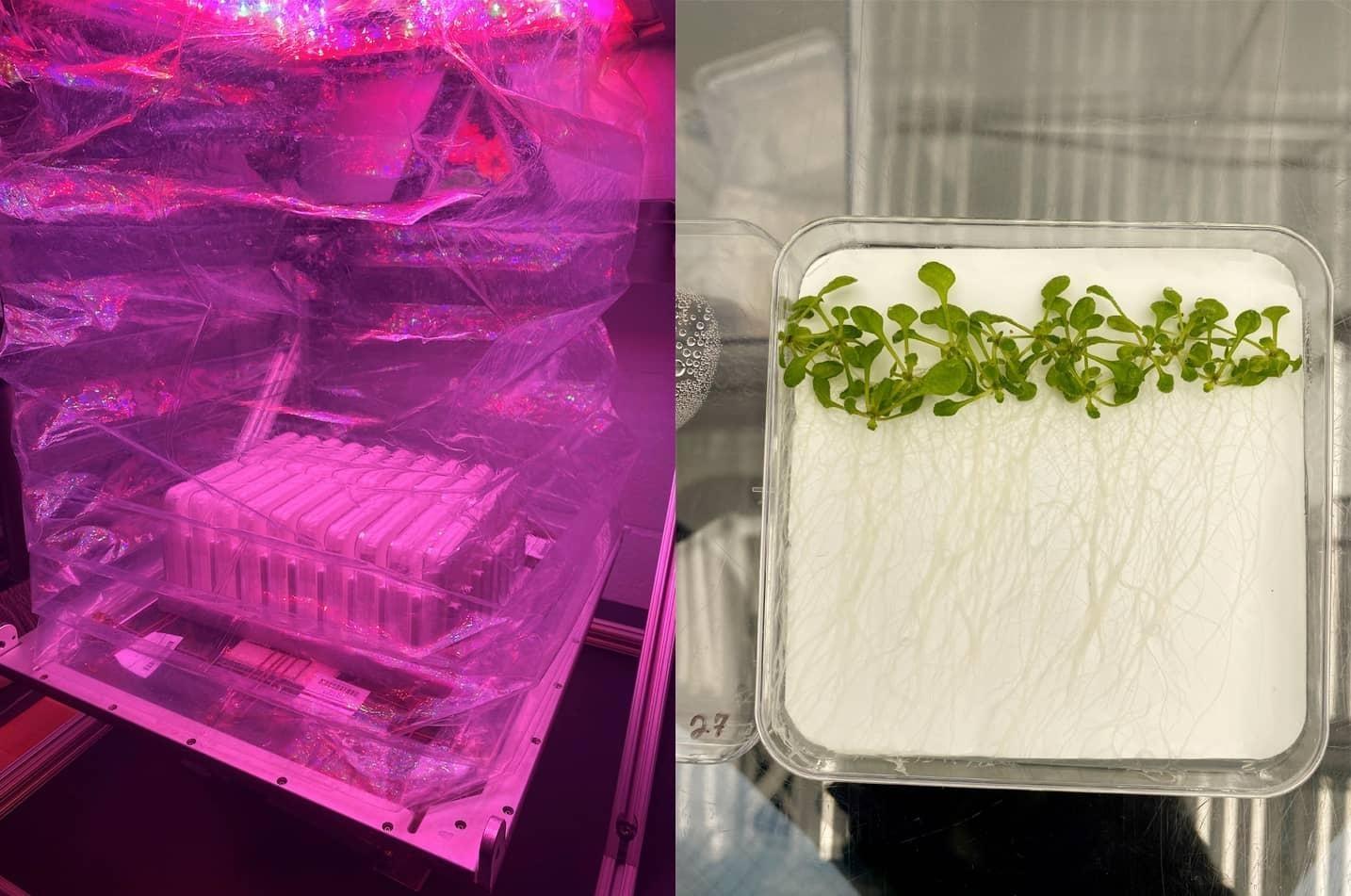Growing Out of This World Plants


Close your eyes and imagine the most incredible garden you’d like to test your green-thumb skills in; dark and nutrient rich soil, lots of water, warm sun, no pests or small critters snacking away on what you’re growing.
Ok, now imagine a garden without any of this. There’s also no gravity.
That’s where several teams of biologists from North Carolina State University hope their plants will grow. The “garden” is on the International Space Station. The plants will launch in June, 2021.
“Throughout history, humans have always taken seeds from novel places and planted them to grow food. That’s essentially what we are doing in the space station,” explains Eric Land, a post-doctoral student and one of the researchers on the space station project.
And while growing plants in space is pretty novel, there are multiple reasons to do it. First, those plants would provide another food source for astronauts on long-term missions. Plants also provide a sense of home and create a calming effect on long-term missions.
As Earth’s population increases, so does the need to grow more food. The trouble is, there is less and less arable land for farming. That means humans needs to get better at growing plants in unfamiliar places with more extreme conditions. Understanding how plants respond to growing in extreme environments, like space, may provide insight into genetic bottlenecks that keep plants from growing in extreme environments on Earth. It might also shed light on how to overcome the challenges.
These projects have been funded by NASA, through North Carolina Space Grant, and the two teams are studying how microgravity affects very basic cellular processes in plants.
They plant they are using for the research is thale cress (Arabidopsis thaliana). It’s very small (about 2 cm or ¾ at maturity) which is good on a space station. It’s also often used by plant biologists for experiments because it’s easy to grow. In addition, because of that extensive research, scientists know a lot about its genetics, proteins and pathways.

But while both teams of researchers are growing plants in small containers, they are evaluating the effects of microgravity in very different ways.
One team is studying how metabolic pathways are altered by microgravity. They’re doing that looking at gene expression and protein accumulation. While some plants in the study will grow in a slow-moving centrifuge to simulate gravity, others will grow in microgravity. Scientists want to see what genes are turned on or off in the microgravity environment.
The second team is observing the effects of microgravity on vacuole fusion. Vacuoles in plants are the largest organelles, which help with respiration, protein creation and the removal of wastes. The plant will die without vacuoles. A wild variety of the plant thale cress and a mutated version in which vacuoles are prevented from fusing to become organelles will be used for the study. A chemical inhibitor that induces the fusion of vacuoles will be applied to each plant and then compared after the flight. Researchers want to see whether microgravity enhances or inhibits plant development.
“Plants will be an integral part of long-distance space travel or habitation,” explains Imara Perera, Ph.D., one of the researchers on the space station project and a professor of plant and microbial biology at NC State, in a statement on her lab’s website. “An understanding of how plants respond to the spaceflight environment is an important step towards enabling them to withstand stresses and optimize their growth.”
Researchers have been preparing test runs of their experiments in NC State labs to make sure the hardware the astronauts are using works as well as possible. After the plants are acclimated to the temperature and atmosphere aboard the ISS, the experiments will be performed.
Both sets of samples will be studied after they are returned to Earth.